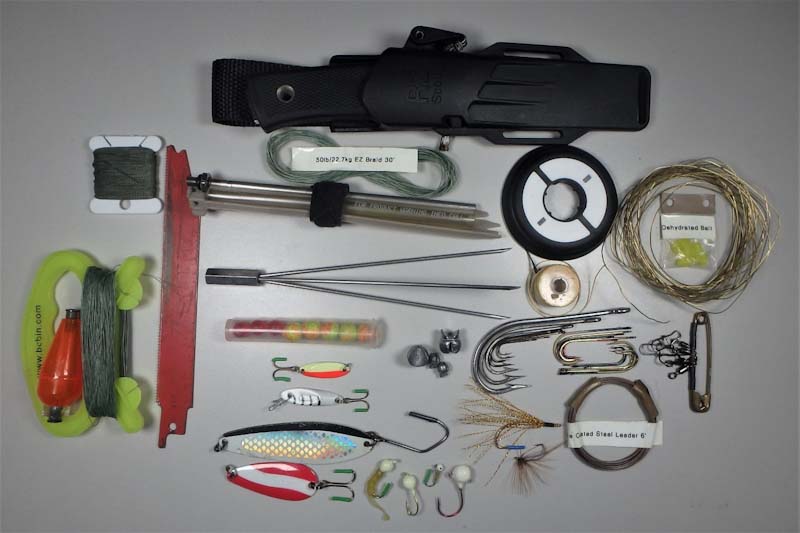Survivalists consider themselves prepared for anything, but remaining ready takes some skill. Read the fundamental rules of resource management to manage your essential supplies better.
You’ll never lose track of things like food, water and fuel, even if you’re working with a group of other survivalists.
1. Prioritize Your Essentials
The first rule of resource management is to stock up on everything you need before getting what you want. All survivalists should know to prioritize their basic needs. Use your available storage space to save food and water.
If it connects with a shelter that provides safety measures, anyone inside will have enough to stay comfortable. Add a few security features like deadbolts and security cameras to protect the people and essential resources within your survivalist shelter.
2. Track Everything With a Spreadsheet
Excellent resource management always starts with a helpful way to track everything. You’ll need to know what you’ve spent on your supplies, how many resources you own and when things expire. A spreadsheet can also save critical information like who’s in charge of which item and where they can find more.
Everyone should have instant access to this spreadsheet or understand where you keep a printed copy. You could prevent financial loss or illnesses if they can view the most updated version before buying extra supplies or accessing your storage.
3. Establish Safekeeping Methods
After you have a collection of resources, it’s time to establish safekeeping methods. Sit with anyone sharing your shelter or gatherings to discuss how you’ll manage everything. Making your collection last longer is essential so everyone will be on the same page about where to put things.
You might stock up on diesel for generators on your property. If someone doesn’t know it should remain in a cool location, they might accidentally put the diesel container in a sunny spot that makes it go bad. Given that diesel prices increased by $1.66 between 2021 and 2022, that could be a costly mistake if it affects your entire supply.
Talk with everyone about the specific storage details everything needs to maintain quality. You can also collect the information in a shared document. Print the storage instructions and place them next to each supply section so no one wonders how to manage your resources properly.
Earn Your Food Independence NOW
4. Invest in Quality Gear
Consider the gear keeping your resources safe. Are the materials high quality? If not, they might erode with time and cause leaks or sealant issues. Investing in better equipment will protect your belongings so they’re ready at a moment’s notice.
A stainless steel box with an airtight lid would protect your paper maps from moisture and mildew. Other materials like glass would also prevent chemicals from leaking into drinking water and food as they sit for months or years.
5. Communicate With Your Partners
Most survivalists support more people than just themselves. You may be one of many people accessing your supplies when you need to depend on them. Talk with your family members or survivalist friends about who can interact with each resource type unsupervised. Everyone will know how you plan to divide them and extend their usability so no one uses too much of one thing.
6. Assign Monitors Per Resource
Miscommunication can be the greatest threat to any survivalist’s stockpile. Minimize the chance of it disrupting your storage and utilization methods by assigning someone to be in charge of each resource.
If one person needs to refill your gas-powered stove and dips into your storage without anyone knowing, they might accidentally take out too much. Replenishing your supplies might take time. This situation becomes avoidable if that person knows who controls the gas storage. They can ask for help if they’re unsure of your resource management rules so your supplies last longer.
This is also essential if you maintain multiple storage locations. Someone who lives closer to where you keep your extra water jugs can monitor them more effectively than another loved one who lives across town. Ask everyone to share the responsibility of monitoring resource usage to ensure long-term survival success.
7. Use Tech to Track Usage
Technology can assist in tracking resource usage as well. Imagine you want to reduce your electricity consumption to avoid overworking your property’s solar panels or other sustainable energy production units. Smart outlets would show you how much electricity each household appliance or lighting system uses in real-time.
Sustainable solar panels may also come with self-monitoring apps that track daily production and how much you have in your external battery storage. If you want to use more tech to track your resource usage, remember to grant access to anyone in charge of your supply monitoring. Management becomes much easier when everyone can access the same information.
8. Always Have a Backup Plan
Even the most well-prepped group can experience accidents. If someone uses too much water or forgets to restock expired food, what will you do to resolve the resource management issue?
Create a few backup plans for each resource to avoid making decisions out of panic. Log where you can access more of each item and any extra storage units you maintain in the area. You should know how to resupply each resource or go without it until restocking is possible. If or when a resource management mistake occurs, you’ll be able to handle the situation and prevent any tension from forming between yourself and anyone who relies on your resources.
9. Ask for Input
Everyone gets a voice in the rules when you’re in a group. Don’t forget to ask for input from everyone depending on your survivalist supplies. They should have a say in things like management strategies, storage systems and who’s in charge of which supplies.
You can also schedule recurring meetings to discuss which management techniques work and whether the group should revise its operations. A majority vote could keep everyone at ease while making them feel like equal members of your group.
It’s also helpful to reflect on and adjust your rules as necessary. What works for three people may not work for a group of five or 10. If you invite more family members or friends to access whatever you keep in your storage, you may need to revisit how your system operates. It isn’t a sign of failure — instead, it’s a sign you care about providing for your loved ones in the fairest ways possible.
10. Create a Calendar
It’s also easier to keep up with your resource management system by utilizing a shared calendar. Log activity when you add to your supplies or use them. Knowing the exact dates of when you refilled your gas cans will help when you’re wondering if you need to add fuel stabilizers or get new gas altogether.
You can also assign responsibilities on your group calendar. Create events according to the dates and times when each person should check expiration dates on your food, clean the storage units or perform any other responsibilities necessary to maintain your supplies. Your calendar will double as a to-do list and a place of reflection to manage your essential resources better.
11. Train in Extra Skills
Everyone brings individual skills when they join a survivalist group. One person might have years of experience cooking for big groups without recipes, while another spent decades hunting deer or birds. Although you should let everyone utilize their best skills, consider what happens if members leave for another group or aren’t around anymore.
Encourage everyone to train in other skills so your group members can do a bit of everything. They should know how to repair clothing, safely handle hunting weapons, clean your water filtration system, start a fire and other skills necessary for survival.
Your group’s quality of life won’t fall apart if your members leave or can’t participate like they used to. You’ll continue functioning according to your management plan and won’t need to overly drain specific resources because you can’t provide for yourselves like before.
12. Practice Pest Prevention
Pests are a significant factor in any survivalist’s long-term resource management plan. They’ll eventually find their way into your food and water storage. Depending on the bug or insect that discovers where you keep everything, they can even eat away at your clothes, blankets and housing.
Look into pest prevention methods to make your resources last longer. Spraying for termites and ants will keep your shelter safe. Sealing food and removing waste from your living space could keep cockroaches and mice away from your supplies. Every effort matters in maintaining usable resources and keeping your group healthy.
Learn the Rules of Resource Management
Once you start collecting enough resources for survival purposes, it’s time to think strategically about your resource management skills. Talk with everyone else who might depend on your food and water so everyone knows how to use or resupply them.
Using tools like calendars and spreadsheets can also help you organize the details necessary to maintain your survivalist stockpiles.





































































